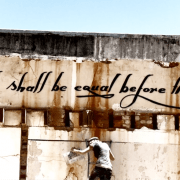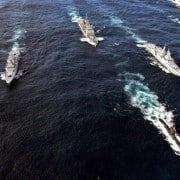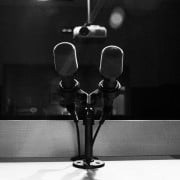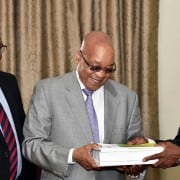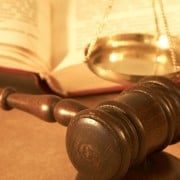|
Getting your Trinity Audio player ready...
|
What was the arms deal?
In December 1999, the South African government signed contracts with a number of European defence companies to buy a range of sophisticated military equipment. South Africa purchased:
- Gripen jet fighters and Hawk jet fighter trainers from the UK/Swedish partnership, British Aerospace (now BAE Systems) and Saab.
- corvette warships from the German Frigate Consortium and Thomson-CSF (now Thales).
- submarines from the German Submarine Consortium.
- light utility helicopters from the Italian company Agusta (which is now part of Leonardo Helicopters).
Why was the arms deal controversial?
The arms deal was controversial for a number of reasons.
First, it has been claimed that the weapons purchased in the arms deal were unnecessary and did not meet South Africa’s security needs. In 1997, the defence review identified poverty, crime and unemployment as the greatest threats to security of ordinary South Africans. The arms deal did not address these threats.
Second, it has been argued that the arms deal was a waste of money that should have been spent on socio-economic programs, especially so close to the end of apartheid. When the arms deal was announced, it was claimed that it would cost R30-billion. This was a massive understatement. The most recent estimate suggests that it has cost at least R65bn up until 2018, with payments still being made on the deal up until 2022. If South Africa had spent that money on low-cost housing, the government could have built over 2-million houses; alternatively, it could have created 100 000 entry-level jobs for over a decade.
Third, critics have claimed that the weapons have never been used, and are, in fact, sitting gathering dust. Although the information about this is limited, media reports have suggested that the Hawk and Gripen aircraft, for example, have been too expensive to properly maintain, and that they have been effectively mothballed despite costing the country tens of billions of rands.
Fourth, the deal has been tainted by allegations of massive and repeated corruption in all of the contracts. BAE Systems, for example, has been accused by authorities in the UK of paying £115m in ‘commission payments’ (often a phrase used to describe bribes) to win the contract. Both the German Submarine Consortium and the German Frigate Consortium have been accused of making payments to officials overseeing the arms deal selection process such as the chief of acquisitions, Chippy Shaik, whose brother was convicted of corruption in the deal in 2005. Jacob Zuma, meanwhile, is due to face criminal charges later in 2019 for receiving bribes from the French contractor Thales to help protect the company from criminal investigations, and for receiving payments from Schabir Shaik to ensure that Shaik’s company was given a slice of the arms deal.
Finally, it has been claimed, with substantial evidence, that investigations into the arms deal by South African authorities have been stopped, prevented or derailed by senior members of the South African government. In 2005, for example, it was found that the Joint Investigation Report, the major investigation into the deal, had been heavily edited after its findings were circulated to the Cabinet members overseeing the arms deal, including Thabo Mbeki.
What was the Seriti Commission of Inquiry and what did it cost?
In September 2011, then president Jacob Zuma, prompted by a Constitutional Court case, appointed a commission of inquiry into the arms deal. Zuma appointed three judges to the commission, however after two resignations, only two judges ended up overseeing the investigation. The two judges were Judge Willie Seriti and Judge Thekiso Musi. Judge Seriti was the chairman, hence the name given to the commission in public.
The commission was tasked with investigating a range of matters in relation to the arms deal. These included whether the arms deal was rational and whether the economic benefits that were due to flow from the deal materialised. Most importantly, the commission was tasked with investigating whether there were any irregularities in the award of the arms deal contracts, and whether there was any corruption in the deal.
According to the Department of Justice, the Seriti Commission cost R137m over the four and half years it operated. This, however, did not include the very large legal costs that would have been incurred by the government departments and employees who had legal representation appear at the commission for every day of its proceedings. This would have significantly increased the total cost to the State of the commission, although these costs have not been disclosed.
Why was the Seriti Commission of Inquiry problematic?
The Seriti Commission was beset by controversy almost from the first moment. Through the life of the commission, multiple employees, including senior researchers and advocates, resigned from the commission in protest at how it was doing its job. One researcher resigned early on, claiming that the commission had a ‘second agenda’, namely, to cover-up government corruption and to silence critics and whistle-blowers.
The commission was heavily criticised by witnesses who tried to give proper evidence of corruption. They claim that they were denied access to documents they were entitled to, and were not allowed to admit relevant evidence on spurious grounds. These led the critics to claim that the commission was not interested in properly investigating corruption in the arms deal. In 2015, over forty civil society organisations (including Right2Know Campaign and Corruption Watch) called for the work of the commission to be disbanded as it was effectively a cover-up. In response three critic witnesses, Andrew Feinstein, Paul Holden and Hennie Van Vuuren, announced that they were withdrawing all participation from the commission in protest at the way it was conducting itself.
The commission was also attacked for failing to call those accused of corruption to give evidence. Jacob Zuma, for example, was not called, and witnesses who attempted to speak about his case were obstructed by Seriti. In the end, only two witnesses were called who were directly accused of corruption – Fana Hlongwane and Chippy Shaik. However, both witnesses were allowed to give their evidence unchallenged: neither Judge Seriti nor Musi asked Hlongwane a single question, while Chippy Shaik was only asked a small number of questions and was not confronted with the large amount of evidence against him.
All in all, the commission’s behaviour led many to believe that it was not interested in conducting any sort of meaningful investigation at all.
What did the commission find?
In April 2016, then President Zuma released the findings of the Seriti Commission and announced their findings in a televised address.
The commission found that there was nothing wrong with the arms deal in any way. Not only did it find that the arms deal was rational, it also found that all the economic promises made in announcing the deal had been fulfilled. Most importantly, the commission found that there were no irregularities in the deal and that there was no evidence of any corruption in the deal. In making its last finding, the commission attacked ‘critic’ witnesses accusing them of making ‘baseless’ allegations.
Why and how has the Seriti Commission of Inquiry been challenged by Corruption Watch and Right2Know?
The commission’s findings were attacked by a wide-range of media and civil society, which claimed that the commission’s findings were a whitewash and that the commission had ignored contradictory evidence. A cursory reading of the commission’s report showed that it was full of errors, flaws and logical inconsistencies.
In October 2016, Corruption Watch (CW) and Right2Know (R2K) filed an application at the North Gauteng High Court. CW and R2K asked that the High Court set aside the findings of the commission – in other words, they were asking for the High Court to rule that the commission’s findings were not credible and should be ignored.
CW and R2K’s application was based on the claim that the commission failed to conduct a meaningful, credible and open-minded investigation. The application provided numerous examples of the ways in which the commission failed to conduct an investigation. Broadly speaking, CW and R2K alleged that the commission had failed in three main ways:
- First, the commission failed to gather evidence that should have been easy for it to access, and when it did have access to key evidence, it failed to consider it. The commission, for example, did not get access to a single document that was held by criminal investigators in other countries such as the UK and Germany. Equally disturbing was the fact that the commission was given over 3-million documents held in a shipping container by South African authorities flowing from previous investigations. The commission, however, refused to look at all the contents of the container, leaving millions of documents unexamined.
- Second, the commission failed to admit key documents on questionable grounds. One of the most notable examples of this was that the commission was unwilling to admit the infamous Debevoise & Plimpton report. This was a report written by the US law firm Debevoise & Plimpton that looked at corruption at Ferrostaal, one of the arms deal suppliers. The report found that Ferrostaal had made over €50-million in payments to consultants on the arms deal. The payments were made to politically connected individuals, and there was no proof of any meaningful work done by these individuals. The report concluded that the payments were suspicious and deserved further investigation.
- Third, the commission failed to test the evidence of witnesses who appeared before it. In other words, the commission failed to ask witnesses accused of wrongdoing any meaningful questions. As noted above, this included Fana Hlongwane, who testified for a few hours and was not asked a single question by Judge Seriti or Judge Musi. Another example of this was BAE Systems, the biggest contractor in the deal. BAE Systems was merely asked to read a statement into the record on the final day of public hearings, and was not asked a single question.
What has happened in the challenge and what is happening on 11 and 12 June 2019?
Following the filing of the papers, CW and R2k were supposed to be given access to what is known as the ‘record.’ The record, in this case, would have been every document that the commission had considered in reaching its findings. However, the process of disclosing the ‘record’ was delayed by the State’s attorney, who failed to deliver any material diligently.
In the end, only a small fraction of the record was delivered to CW and R2K. This fraction, however, provided further evidence that the commission had failed to conduct an open-minded and meaningful investigation. For example, the record showed that the commission had been offered access to documents held by authorities in Germany and the UK – but that the commission had, either due to incompetence or laziness, failed to take up these offers.
In 2019, CW and R2K were surprised to receive a notice, after nearly two years, that all opposition to the application by the Presidency and government departments was being withdrawn. This means that CW and R2K’s application would not be challenged and that it would, as a matter of course, be granted a default judgment. A default judgment is given by a court confirming that the applicants (in this case CW and R2K) had brought the application and the application had been granted.
CW and R2K duly applied for a default judgment. However, the judge president stated the case was too important to be decided in this way. Instead, it was decided that the North Gauteng High Court would convene a full panel of judges to hear CW and R2K’s evidence and to ask questions of their lawyers. This will mean that, at the end of this process, the court will hand down a written judgment – a very important development that we explain below.
The hearing before the High Court panel of judges is due to take place on 11 and 12 June. The judges will look to ask questions of CW and R2k’s lawyers, as well as those of the Presidency. The court will reach a judgment shortly after this.
Why is the legal challenge against the Seriti Commission of Inquiry important and what is likely to happen?
The legal challenge against the Seriti Commission is important for a range of reasons, but two predominate. First, setting the commission’s findings aside means that they cannot be relied on by those accused of corruption to clear their name, either in public or before the courts. This may become very important if Jacob Zuma appears in court on corruption charges related to the arms deal later in 2019. Zuma will not be able to rely on the commission’s findings in his defence. Setting the commission’s report aside will also make it easier for authorities in South Africa to reopen the arms deal investigation.
Second, a written judgment in this case means that the case will create jurisprudence about what a commission of inquiry must do in order to do its job properly. It will, hopefully, create a very clear framework and set of directions about how commissions of inquiry must conduct their investigations rigorously and with an open-mind. This is very important in South Africa, which appoints a large number of such commissions.
The decision by the Presidency to withdraw opposition to CW and R2K’s challenge is extremely important because it means that CW and R2K cannot lose their application. As such, it is expected that the Seriti Commission’s findings will be set aside. However, having a full panel of judges hear the case and provide a written judgment suggests that the courts are likely to make serious findings of fact, definitively answering the question – was the Seriti Commission a cover-up?

